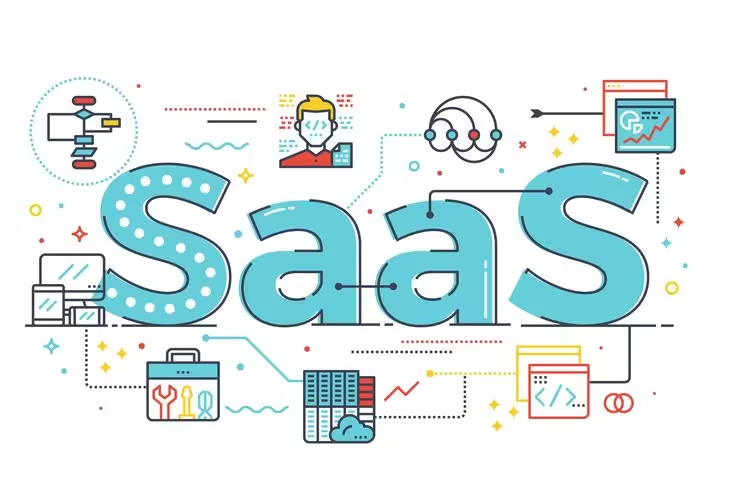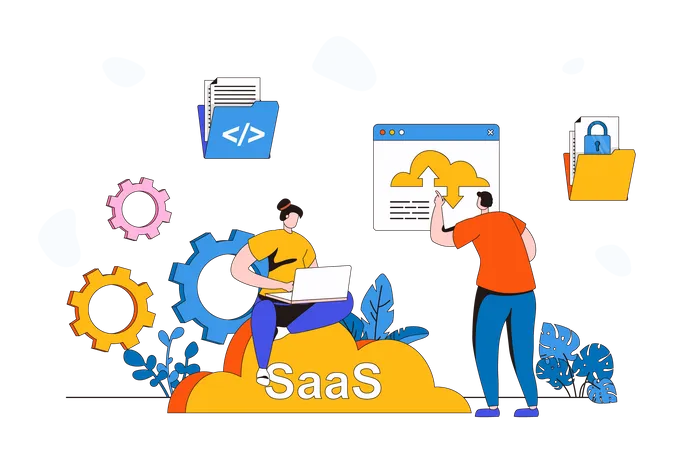
When onboarding a new user on a SaaS product, the experience should prioritize achieving better outcomes.
Every SaaS product is distinct, with its own characteristics and parameters to consider. As a UI/UX designer, it’s essential to understand the onboarding challenges faced by various SaaS applications to gain insight into their workflows.
What is SaaS onboarding?
SaaS onboarding involves introducing a product to potential users and motivating them to leverage it for their business needs. During this phase, it’s crucial to highlight the benefits of your product within a set timeframe.
What are SaaS onboarding experiences?
Consider buying a skincare product: as you use it, you feel your skin’s softness and ultimately enjoy the results. Similarly, SaaS onboarding experiences encompass the interactions users have with your product.
This journey begins at the signup stage, where users typically encounter a welcome screen and options for engaging with customer support. If this experience is positive, users will appreciate your product; if it’s lackluster, they’re likely to lose interest. According to Thrive My Way, 67% of customers expect high standards from SaaS companies, and that expectation continues to rise.
Main SaaS user onboarding challenges

SaaS user onboarding presents several key challenges, but understanding them can improve your navigation of the process. Customer retention in SaaS relies on various factors.
One significant reason many users stop using SaaS products is the difficulty in guiding them through the entire onboarding experience.
While your product is undoubtedly valuable and capable of solving users’ problems, getting them to that point can be complex.
Understanding user needs and behaviors is crucial. The more you grasp how your users think and act, the better you can guide them to success.
Let’s explore the top challenges in SaaS user onboarding:
- Cluttered Interface
Offering too many unnecessary options can overwhelm users. It’s essential to create a straightforward experience that feels easy to navigate. About 40% of users prefer self-service to direct interaction, so simplicity is key. - Lack of Customer Feedback
Many SaaS companies miss out on valuable feedback because users often don’t take the time to voice their complaints. If the process to contact customer support feels burdensome, users may just continue as they were. To enhance your product, proactively seek feedback instead of waiting for users to reach out. - Diverse User Interests
With a wide range of users comes a variety of needs and interests. Not everyone will be looking for the same features or solutions. It’s important to understand these differences by engaging with users about their requirements. - Success Takes Time
Creating a great user experience involves following a series of necessary steps, and results won’t happen overnight. Consistency is vital—stay committed to the process, and success will come in due time.
How to create the best SaaS onboarding experience?
To prevent user dissatisfaction, let’s explore how to create a better onboarding experience. Here are some key strategies:
- Minimize Friction
A fundamental principle is that the less friction users encounter, the better their experience will be. While some friction can be beneficial—especially in complex enterprise platforms that require both technical and human skills—most users prefer simplicity.
People naturally gravitate toward shortcuts in their personal and professional lives. By presenting users with a streamlined set of essential features, you can enhance their satisfaction. Conversely, including unnecessary features can diminish your product’s value in their eyes.
One excellent example of a frictionless onboarding experience is Slack’s sign-up process.
Tip: Avoid overwhelming users with ten features when only a few are essential. Focus on user needs and design a feature set accordingly.
- Short Time to Value
The quicker you guide users to value, the more engaged they will feel. Time to value measures the journey from sign-up through onboarding to when users experience their “Aha! moment” with your product.
To optimize this, understand your users’ core needs. Once you grasp that, it becomes easier to create the most efficient path for them.
Tip: Conduct surveys to discover what features most users prefer.
- Self-Service User Flow
Isn’t it great not to rely on others for assistance? To enhance the SaaS experience, ensure users can navigate the process independently, only reaching out to customer support when necessary. Providing 24/7 access to the platform is essential.
Incorporating a resource center within the app allows users to find help and onboarding documents on demand.
- Interactive Onboarding
As social beings, we thrive on interaction and feedback. Responding to user actions fosters a sense of connection during onboarding.
This approach enhances their experience and helps them feel valued. A study shows that 60% of companies use 4-6 tools for effective onboarding.
Mailchimp exemplifies interactive onboarding, with intuitive graphics and conversational text that engage users effectively.
- Contextual Experience : Onboarding should align with users’ current activities. For instance, if your business involves explaining technical terms, consider using tooltips to clarify concepts, provide pricing information, and display disclaimers. This approach enhances user understanding of your offerings.
By tailoring the onboarding experience to user needs, you empower them and create a more positive work environment.
- Use of Personalization : Personalization is an effective way to engage users with your product or service. For example, when users sign up for Grammarly, they’re prompted to share basic details, allowing the platform to deliver a tailored video tour of its features.
- Implement Onboarding Checklists
Utilizing onboarding checklists with incentives and a progress bar can effectively draw users’ attention to key activation points. These elements serve as natural triggers, guiding users through the onboarding process.
By providing effective interactions, personalized and contextual information, limited features, visually appealing displays, and tailored solutions, you can significantly enhance the user experience and foster a loyal customer base.
Conclusion
Applying these strategies will help you create an exceptional user onboarding Enhance Customer Retention and Brand Loyalty through Effective User Onboarding
To boost customer retention and cultivate brand loyalty, it’s essential to stay attuned to evolving customer behaviors and leverage the latest strategies for user engagement.
Leading brands like Mailchimp and Evernote showcase the importance of a well-crafted onboarding process in driving growth for SaaS businesses. A successful onboarding experience can significantly impact user satisfaction and long-term retention.
Understanding Barriers to Successful Onboarding
Identifying barriers in the user onboarding process is crucial for success. Recognizing the reasons behind ineffective onboarding strategies enables you to implement targeted improvements.
While external factors may influence the onboarding experience, focusing on your core customer base allows you to identify the key elements that contribute to effective user onboarding. By prioritizing these elements, you can create a seamless onboarding journey that enhances user engagement and drives lasting loyalty.
Optimize your onboarding process today to set the foundation for sustainable growth and stronger customer relationships!




